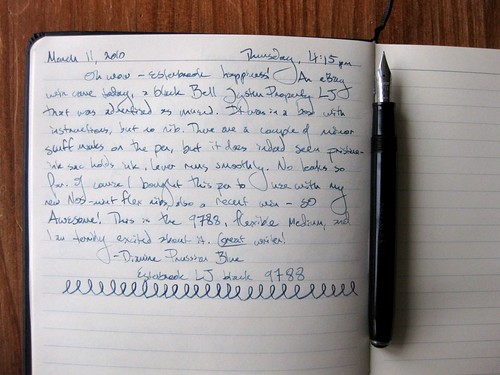
Here's a late-night blog post that is tangentially related to letter-writing, and delves more into my pen-and-ink obsession. This entry features two items I've been coveting for a while, and have finally acquired to my great happiness: a vintage black Esterbrook "Bell System Property" pen (featuring a flexible 9788 nib) and a Rhodia Webnotebook. You'll notice there is no link for the Esterbrook, because these glorious classic fountain pens are no longer made. I am probably not going to go into deep geek level about why the "Bell System Property" pens are particularly desirable in a quirky pen-fanatic way... if you're really curious, you can read about it here. "Estie" lovers will just understand.
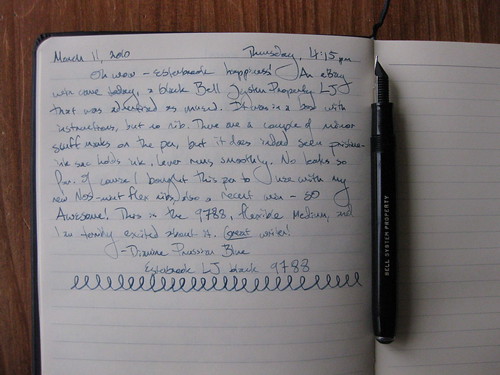
This post is really for the edification of many of my fountain pen friends, because only a fountain pen lover can really understand the excitement of not only finding THAT pen on eBay, but getting a heck of a deal on it.
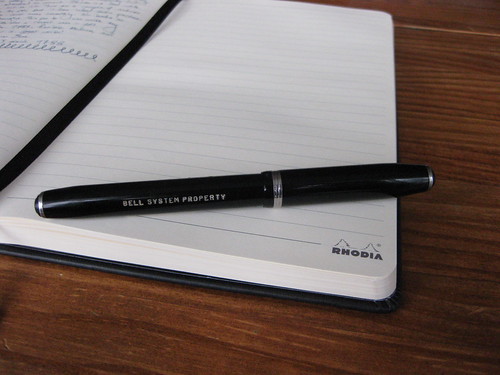
There's the BELL SYSTEM PROPERTY engraving! Ooh la la. These pens were, I gather, ordered en masse for the original Bell telephone company. (I just discovered a big Wikipedia hole - there is no entry for Esterbrook! Egads!) They are somewhat common among Esterbrooks floating around out there, but if one starts falling into the affliction that is known as "collecting" Esterbrooks (and good gravy, methinks I might be on the precipice), one of these pens is pretty much required for your collection. This is an LJ model.
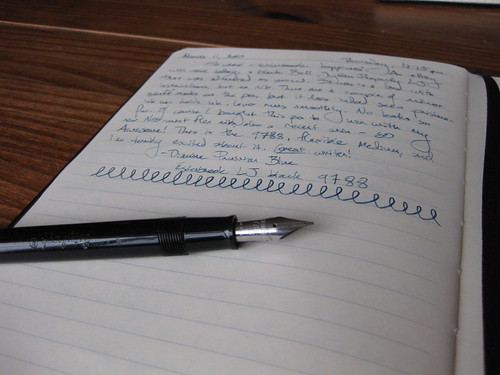
In this fine Rhodia Webbie journal (which I neglected to photograph closed, but you can see it on the Rhodia website), I wrote about the pen, noted the ink (Diamine Prussian Blue), and at the bottom made the squiggly loops to try to demonstrate the medium flexibility of the nib, meaning the tines separate more with greater pressure, creating a wider line. Cooooooool. You can't do that with a ballpoint, people.
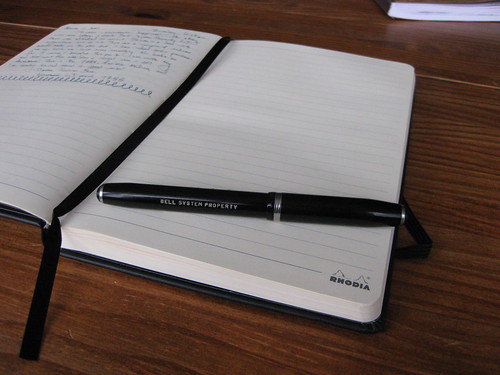
Some people have complained that the Rhodia logo on every right-hand page of the journal is a bit much, and I would probably agree, but I'm really happy with this journal in every other way so I'm not gonna complain. The pages are smooth, a nice light cream/off-white color, and of course they take fountain pen ink beautifully. No bleed-through, no show-through, I can easily write on both sides of the page with no intrusion. This is the A5 size.
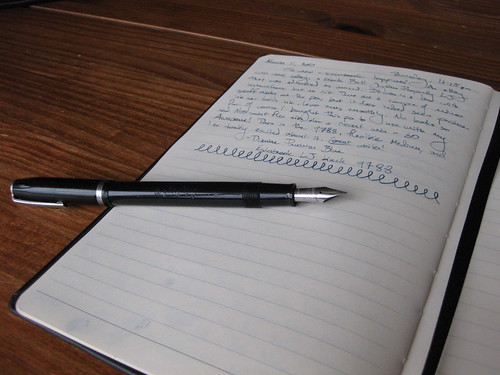
For the record, I generally do not "post" my pens (meaning put the cap on the end while I write), but I do when I photograph them: the clip keeps the peb from rolling around.

Right, I know I took a lot of photos, but I had fun. Let me note here that I really like the ribbon bookmark. Just black. Unobtrusive. Classic. Oh, and I left my writing unblurred because it's all about the pen and ink, and I'm happy to share that info with anyone who's interested enough to care.
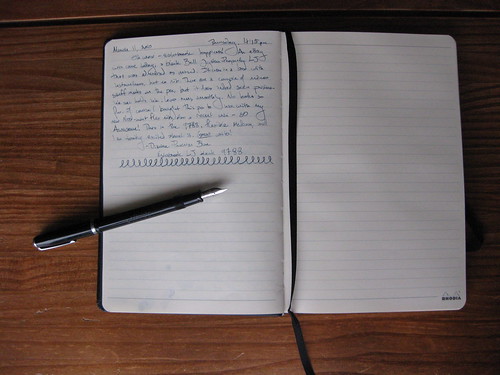
Here's a full top shot so you can see all the lines in the journal. I really like that there is a slight margin, the lines don't go all the way to the end of the page; that makes it feel neater somehow. I also appreciate that the very top and very bottom lines are heavier and thicker. Again, a neater appearance.
I guess this is pretty much a review so I'll tag it as such. The Rhodia Webnotebook is everything I'd hoped it would be.
The Esterbrook pen came without a nib, but that's okay because I'd won an eBay auction separately with a bunch of NOS nibs, most of which were flexible. Woo-hoo! I am loving these Esterbrook flex nibs. They are just dreeeeeeaaaaaammmmmmyyyy to write with. I was really pleasantly surprised with this pen, because it was advertised as "unused." I don't know if I believe that, because there are a couple of scuffs on the barrel, but what I care about is the ink sac. These Esterbrooks were manufactured sometime between the late 1940s and the early 1960s. (Experts would know more precise numbers, but I don't.) One doesn't expect the original ink sac to be in pristine condition. Either this pen, which came in a box with the original filling instructions, has a rare pristine ink sac, or someone did a really nice re-sac job. If it is the former, I anticipate I'll have to get it re-sacked one of these days, but that will cost less than 20 bucks and be worth it for an incredible writing instrument.